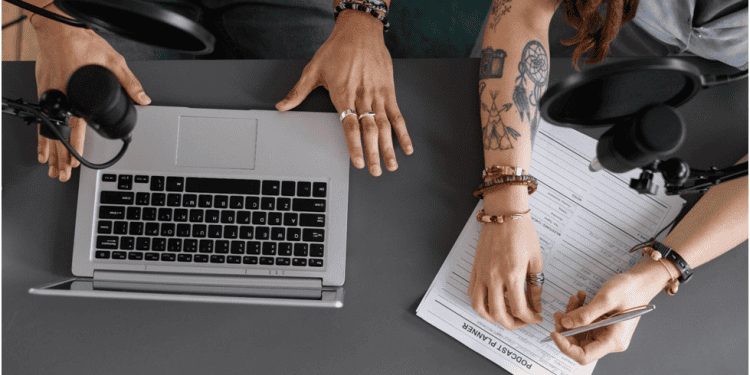Strolling through the world of creative content, one might overlook a major aspect of it—media licensing. It’s the invisible lifeline binding creators and users, defining rights, and setting boundaries. Yet, too many take a backseat when understanding this vital framework. Creative rights encompass the heart and soul of every creation—and protecting them becomes incredibly significant in showcasing the intrinsic value of one’s creative endeavor.
Understanding Creative Rights:
Creative rights are, in essence, a set of protective measures intertwined with the concept of intellectual property. They serve as guardians—preserving creators’ original works from unauthorized use—and ensuring that creators receive rightful acknowledgment for their contributions. As such, creative rights are a necessary cornerstone for creators—who rightfully have control over their content—and for consumers—who appreciate and enjoy the content.
Diving Deep into Media Licensing:
Media licensing is derived from the broader landscape of Copyright Law. Consider it as a bridge that connects creative rights to the public domain. Key terms like intellectual property, licensing, and royalties break down this process. These terms collectively work towards ensuring that the creator’s work is used appropriately—providing an ongoing income stream and preserving the work’s original essence.
Why is Media Licensing Important?
Why should one bother with licensing their media? Simply put, it is an essential layer of protection for your creative rights. Licensing offers a legal framework to maintain creators’ full control over their work. Real-world examples—such as lawsuits against famous artists for unauthorized song samples—show that failure to navigate licensing can lead to severe repercussions.
The Consequences of Creative Rights Infringements:
There are moral and legal considerations when it comes to the violation of creative rights. Several detrimental consequences can result from breaking these established guidelines, including but not restricted to the following:
- Expensive Legal Matters: Serious financial penalties may result from violating someone’s intellectual rights. If the creator wins in court, the infringer might be forced to make compensation, which could be substantial.
- Compensation of Profits: If a court determines that the violation produced illegal profits, the infringer may be forced to return the proceeds to the original rights holder.
- Destruction of Infringing Goods: Illegal products may sometimes be seized and destroyed.
- Reputation Damage: If someone—or a company—is found guilty of breaking creative rights, their reputation could be severely damaged.
- Loss of Business Opportunities: Current and future commercial prospects could be lost by infringers. Due to ethical concerns, partners may sever ties, and clients may choose to do business with someone else.
This can affect even well-known people, as seen by many high-profile copyright infringement cases. Recall that avoiding these fines isn’t the only way to respect creative work and permits. It all comes down to creating a space where artists are respected and their contributions are duly recognized.

Safe Alternatives:
For those seeking user-friendly spaces to collect or distribute creative content, platforms like Creative Commons offer wonderful resources. However, like everything else, they require appropriate usage and understanding.
Creative Commons is a non-profit that makes it easy to give the public permission to distribute and use creative works by offering free, easily navigable copyright licenses. It provides a range of licenses—from entirely open to more restricted permits—bridging the gap between the world of free content and strict copyright laws.
However, even within Creative Commons, attribution and recognition of original work remain critical. This means that even while using or sharing work distributed under Creative Commons, one must always give credit to the original creator, follow any permissions and conditions specified, and not infringe upon the rights of the original creator. It also often allows others to use, share, or even build upon the work as long as the source is credited. This promotes a healthy creative environment while valuing and respecting the creators’ work.
Check Out a Trademark License Agreement Template:
To get a hands-on feel of what a license agreement looks like, check out this license agreement template. It’s a great starting point to familiarize yourself with the terminology and stipulations.
Lawrina offers many legal templates and documents, serving as a library of available legal forms and agreements. Whether you’re an artist looking to protect your work, a business wanting to ensure your operations are legally sound, or an individual looking to familiarize yourself with legal documents, Lawrina provides accessible tools and materials to navigate the detailed landscapes of legal writing. Their trademark license agreement template is a great start for understanding the basic structure and essential terms of such agreements.
Conclusion:
In conclusion, navigating the licensing world while protecting your creative rights is not just significant but indispensable. The internet is a treasure chest of creativity—open for all to cherish. Yet, like any treasure, it requires respect for lawful ownership. As creators and consumers, we must raise our game and make the creative world a fair and respectful playground for all.
Regarding protecting creative rights and navigating the world of media licensing, the motto is simple—respect, understand, and adhere. Happy creating and consuming!










